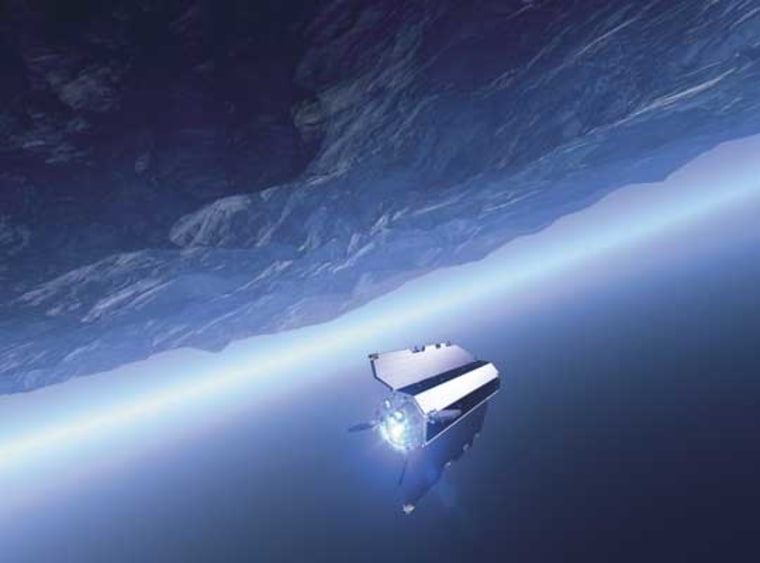Nearly seven months after hitting orbit, the European Space Agency's latest super satellite has begun its heady task of measuring true gravity on Earth.
The main goal of the Gravity Field and Steady State Ocean Circulation Explorer (GOCE) mission is to help climate scientists improve predictions by accessing a more precise understanding of ocean currents.
By comparing the topography of the oceans with undulations in the gravitational field, scientists gain a more accurate picture of the oceans' currents. And these currents move heat around the planet in a way that affects global climate.
Although the satellite is known formally as GOCE, the agency also refers to it as the "Formula 1 of satellites." This sleek, 17-foot bundle of sensors currently barrels along at an altitude of 158 miles in the extreme upper limits of Earth's atmosphere.
GOCE launched on March 17, but maneuvering the $515 million satellite into position has eaten up half a year's time.
"In terms of science, we are really at the beginning," GOCE Mission Manager Rune Floberghagen told Discovery News. "This may sound strange for a satellite that was launched half a year ago, but in fact we have been forced by Mother Nature to spend the better part of this period lowering the orbit down to an altitude where it is possible to fly in a completely drag-free manner."
With an estimated 20-month life span, the satellite has started the first of two six-month, continuous sweeps of Earth's subtle tapestry of gravitational variation.
Aside from oceanographers, most people don't sit around pondering gravitational variation. After all, Earth's gravity doesn't vary that much. But density differences within the planet affect it, as do ocean trenches, mountain chains and even Earth's rotation.
The result is a hidden topography of gravitational highs and lows, which scientists call the geoid. Those highs and lows aren't drastic enough to bump athletes into new weight classes, but they certainly affect the 332,500,000 cubic miles of water in the world's oceans.
Slideshow 12 photos
Month in Space: January 2014
"[The geoid] is of paramount importance for the determination of the ocean's dynamic topography and therefore for the understanding of how the oceans transport heat and water," Floberghagen said. "As oceans are the main regulators of the climate, this also has due impacts on our understanding of climate evolution."
An accurate gravity map will also more shed light on the inner Earth: plate tectonics, seismic activity and other geophysical processes.
Just as a neighborhood map might change due to road closures or a new development, the geoid also fluctuates. The culprit? All those cubic miles of water.
"Gravity is caused by mass and if you redistribute the mass on Earth, it changes the gravity field," NASA scientist Michael Watkins told Discovery News. "If there's a big drought somewhere, monsoons in the tropics or melting polar ice, such as in Greenland, that changes the gravity field slightly."
Watkins is the project scientist for NASA's Gravity Recovery and Climate Experiment (GRACE) mission, GOCE's predecessor. The twin GRACE satellites launched in 2002 to track changes in the gravity field.
By measuring geoid changes, Watkins said, scientists are able to detect shifts in the water mass and determine previously immeasurable quantities, such as groundwater losses in Northern India.
GOCE's mission is comparable to taking a high-quality photograph of a subject, while GRACE aims to film the subject in motion, but at a lower resolution. In this, Watkins said, the two projects complete each other — an assertion the GOCE team very much agrees with.
"Geophysically speaking, the two missions are perfectly complementary," Floberghagen said.
More on gravity | climate change

